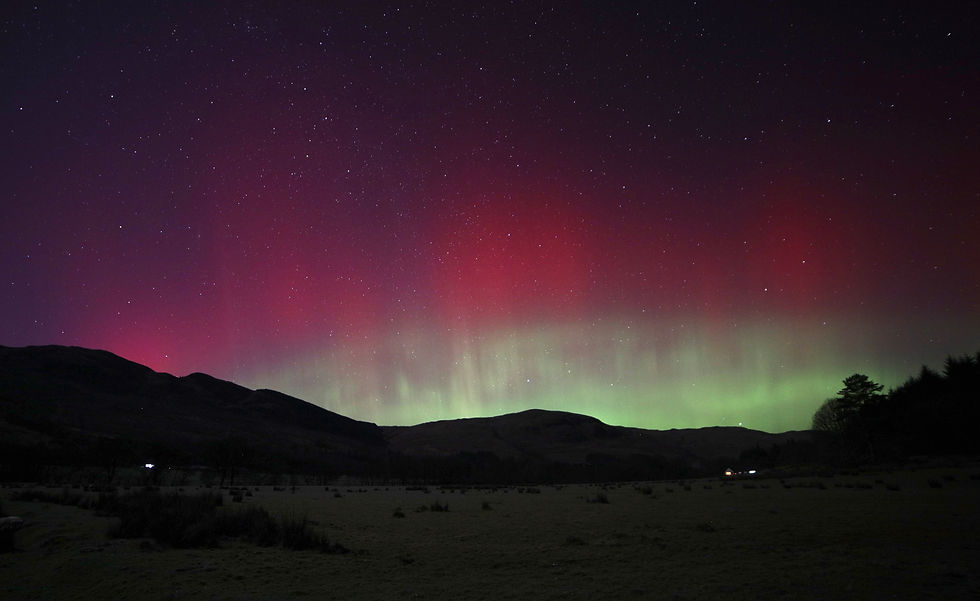
We recently had an amazing Aurora display here in the UK. I have had many questions from guests about how to see it and how to do Aurora photography it so thought I would write a blog on how I approach it. There is loads of resources out there on the internet from amazing photographers so worth doing a google search but this works for me here on the west coast of Scotland.
First thing the Aurora is happening all the time but that doesn't mean you can always see it. All the conditions need to be right to capture great images. Now I use a SLR camera but I do know people with modern smart phones have still managed decent photos. The condition you need are fairly common sense but here goes -
Dark Skies - As little light pollution as possible and that includes the moon. If the moon is too full the light from the moon will limit the ability to see the Aurora.
Clear Skies - As little cloud cover as possible
Time of year - Oct to March is the best time as the dark hours are at there longest
Aurora activity - Most phones have apps (Aurora Watch etc) available that will alert you to activity but be aware Aurora activity at its strongest levels (Amber & Red Alerts) can last only for a short period of time. So you need to be prepared and in location quite quickly
Location - The further north you are the better. The Aurora is towards the north so a clear view looking north is needed
How to photograph and watch. In the UK getting a display that can be seen with the naked eye is rare. So you will normally need a decent camera with manual settings to capture. This is what I do and Im far from expert but generally it works.
Kit -
Mirrorless SLR
Wideangle Lens
Tripod
Shutter release
Warm clothes
Head torch
Flask of Coffee (you could be waiting for some time)
Settings -
Manual focus - focus to infinity, try and focus on a distance object or star
Single shot
ISO - depending on the strength of the Aurora ISO 800 min and go up to level where noise on the pic doesn't become an issue
Shoot wide open - F2.8 or F4 allows maximum light to enter camera
Shutter Speed - 8 Seconds and upwards take some test shots and see what works best
RAW - This allows post editing of images
Processing Photos -
Try not to over saturate the colours. Lots of photos you see online have been over saturated and don't look natural. I personally do hardly any post editing work on Aurora photos
Most of all enjoy the experience it's one of natures true wonders and sometimes it best to just watch. Even on those nights when the Aurora isn't so active night time photographer is wonderful. I recommend going with a friend as being out in the open on your own in the dark comes with some risks so safety first.
Get out there and enjoy it. Experiment and see what you get. I have been doing this for 5 years and am far from an expert but love it and that's what it should be about. In that time I have seen the Aurora about 50 times so 10 times a year but only about 3 of those has been truly a wow moments so it takes time and effort.
Enjoy the Aurora.

Comments